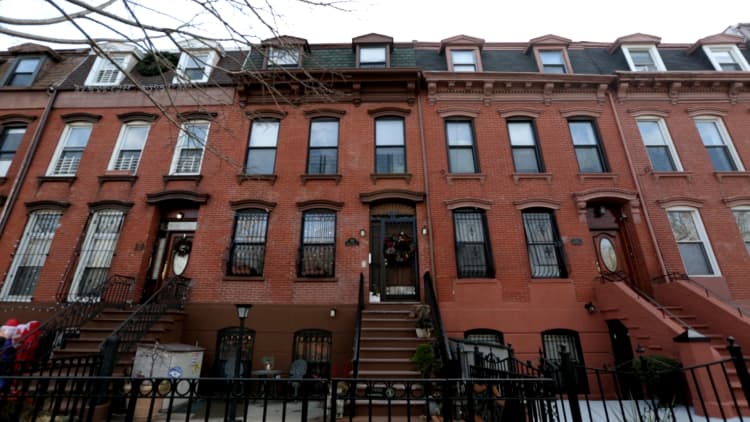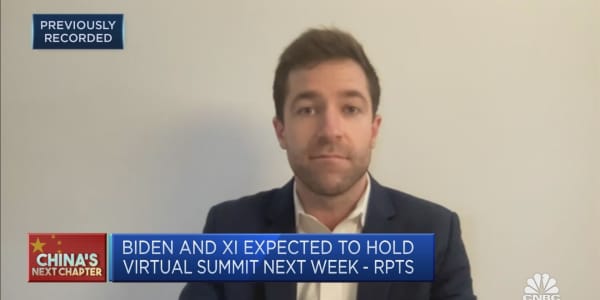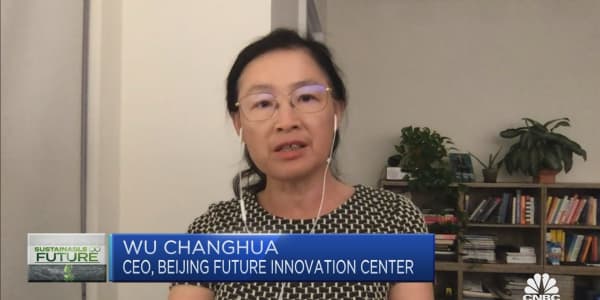
If you ask a New Yorker where to find the most authentic food in Chinatown, they might suggest the dim sum at the circa-1920 Nom Wah Tea Parlor, or that you haven't lived until you've had a three-way at the Peking Duck House (the signature roasted duck, served three ways). You'll find both of these restaurants in the densely populated Lower Manhattan neighborhood where taxi drivers traditionally head when tourists jump in the cab and say, "Chinatown."
But increasingly, if you ask a New Yorker where to find the most authentic food in Chinatown, they might reroute you to Brooklyn. Devotees of hot pot, a fondue-esque specialty from China's Fujian Province, are lining up at eateries in Sunset Park, Brooklyn's first Chinatown. In Bensonhurst, the annual Festa di Santa Rosalia remains a testament to the area's Italian heritage, but this middle-class neighborhood now claims the highest concentration of Chinese immigrants in the borough. Chinese residents comprise the largest immigrant group in Brooklyn; the Chinese population in New York City is the largest outside of any Asian city.
Seismic cultural shifts that occur as one immigrant population eclipses another are a classic part of New York life and are now responsible for dim sum and dumplings outnumbering pizza joints and spumoni shops. Yet rapidly rising rents and the frenetic pace of gentrification are resulting in a parallel form of Chinese migration, focused on money: foreign buyers, including extended members of Chinese families, who view Brooklyn real estate as a secure, high-return investment.
Since the Great Recession, snapping up prime real estate in coastal American cities, sometimes sight unseen, has become an increasingly popular sport with China's wealthy. In 2014, for the first time, the Chinese bought more Manhattan apartments than did the Russians, according to Reuters. The strength of the U.S. dollar compared to the fragile yuan is making China's middle class a major force in the Brooklyn real estate market. The existing cultural infrastructure of its Chinatowns aside, the potential profit margin of owning property in Brooklyn's up-and-coming areas is hard to beat.
"You could purchase an income-producing property in a middle-class Brooklyn neighborhood like Bed-Stuy and see a 7 or 8 percent rate of return on a monthly basis from your rent rolls," said Jeanette Colegrove, a licensed real estate broker at Brown Harris Stevens in Brooklyn. According to January 2017 figures from the Elliman Report, a monthly survey of New York City rentals, the median rent in Brooklyn has risen to $2,750.
Then there's the potential of a property's yearly appreciation. While Manhattan apartment resale values fell 1 percent from 2015 to 2016, the price of Brooklyn town homes and apartments grew 16 percent. "Manhattan properties can't match that. The stock market can't match that," Colegrove said.
Real estate investment has proved to be a popular way for Chinese citizens to circumvent restrictions on foreign investment since 2007, when China's State Administration of Foreign Exchange instituted a strict yearly limit on foreign currency exchange, the equivalent of $50,000. U.S. real estate can promise higher yields, not to mention greater stability, than stashing the family savings in what was in 2016 the worst-performing Asian currency.
They are advertising all over the place, with billboards in Chinese cities advertising green cards in exchange for U.S. investment.Dr. Peter Kwongprofessor of Urban Affairs and Planning at Hunter College
Despite the $50,000 cap, China's foreign direct investment in the United States hit a record $45.6 billion in 2016, according to a report by the Rhodium Group, a policy group that tracks global economic trends. That figure is triple the recorded amount of FDI that flowed from China to the United States in 2015, making the United States the world's largest recipient of Chinese foreign direct investment.
Dr. Peter Kwong, a professor of Urban Affairs and Planning at Hunter College who is a leading scholar on immigration, said for many middle-class Chinese, Brooklyn real estate represents far more than a long-term investment plan. It functions as a catalyst and anchor from which a pathway to citizenship, or at least better economic prospects through the legal right to live, study and work in the United States, can be forged. That's in large part thanks to the EB-5 federal visa program: Foreign investors who sink $500,000 into American residential or commercial projects that create at least 10 jobs become eligible for green cards for themselves, their spouse and their unmarried children.
Chinese extended families often pool their funds. When one family eventually receives a green card, they can then sponsor visas for subsequent relatives. Compared with the astronomical cost of real estate in major Chinese cities, Brooklyn can seem like a downright bargain. In urban China "$500,000 is not that much anymore," Dr. Kwong said.
Colegrove said that a foreign investor who bids on a Brooklyn property may be representing multiple buyers back home. "He's not simply spending his own money," she said. "There are multiple people pooling money together to make it happen: family, friends, business partners."
For Chinese real estate investors who can't reach the $50,000 level, or the combined $500,000 that often leads to working with a broker, smaller sums can now be invested through real estate crowdfunding platforms.
The blame game
For Brooklyn residents, rising rents and the shrinking availability of affordable single-family homes is an age-old concern — one that has only intensified as overseas buyers drive up prices in an already tight market.
Consider the quintessential Brooklyn brownstone: These days, the median price hovers at $2,257,500, according to the most recent quarterly figures from the Elliman Report. While at $385,000, the median price for an apartment in a co-op building remains far less, it still puts homeownership out of reach for most residents of Brooklyn, where 2015 U.S. Census figures indicate the median household income is just over $48,000.
Hipsters, trust fund kids and tech executives are among those who share the blame for driving up Brooklyn prices. But like many foreign real estate investors, home buyers from China tend to spend more and pay in cash. A 2016 report from the National Association of Realtors indicates that foreign buyers tend, on average, to purchase properties with a median price that is $50,000 more than the average U.S. home sale.
"Cash is still king," Colegrove said.
According to Realty Trac, a company that tracks U.S. real estate, the affordability index in Brooklyn sits at 123 percent. That means the average home mortgage will cost 23 percent more than the median monthly paycheck. And that has remained the case even in the wake of the 2008 recession.
Middle-class Chinese investors can get into the game through real estate investment firms that target slowly gentrifying Brooklyn neighborhoods. Such firms, Colegrove said, "purchase hundreds and hundreds of properties in very poor condition and do high-end gut rehabs." She estimated the potential rate of return at "around 12 percent."
A crackdown from Beijing
The Chinese government is taking steps to further limit the flood of real estate investment leaving the country. In January, China's State Administration of Foreign Exchange further tightened restrictions on foreign currency exchange for mainland Chinese residents, making it essentially illegal to use such conversions for foreign real estate transactions. Penalties for violators are steep, from being placed on a government watchlist to losing access to foreign currency for three years.
That has already led to some international projects dependent on funding from Chinese investors to go under — the investors can no longer make recurring payments during the construction process.
Despite tightening restrictions and increased scrutiny on foreign investments, Dr. Kwong said many Chinese remain "desperate to get their money out," and he thinks they will find ways to get around the rules. Kwong said Chinese communities will continue to grow along subway routes in Brooklyn, including the N Train route that terminates in Brooklyn's Coney Island. According to a recent search on Yelp, there are nine Chinese restaurants in the area and counting.
Benjamin Eckersley, a research analyst at Rhodium focusing on China's international trade and investment flows, noted that Beijing describes capital controls as temporary. He added, "The appetite of Chinese firms and individuals to invest in advanced economy real estate is far from sated."
Rhodium wrote in a recent research piece that the pace of outbound foreign direct investment has slowed in the past few months, but it is large, multibillion-dollar acquisitions that are likely to be the most impacted. "Smaller investments that avoid the worst of the regulatory scrutiny ... should continue to hold up relatively strong."
Dr. Kwong said Chinese with connections in the United States will find loopholes around financing, but many average Chinese investors may find the new restrictions more difficult to circumvent.
The Beijing government's crackdown can't restrict the stratospheric rise of Brooklyn's international appeal — one that Colgrove said took a "quantum leap into stardom" with the 2012 debut of the Barclays Center, a massive sports and entertainment arena. The arena is part of the $4.9 billion Pacific Park project that received $475 million in financing through the EB-5 program — much of it through Chinese investors.
Yet Dr. Kwong painted a picture of aggressive sales tactics on the part of some U.S.-based brokers and developers, who target the savings accounts of working families in mainland China.
"They are advertising all over the place, with billboards in Chinese cities advertising green cards in exchange for U.S. investment," Kwong said.
While it's now commonplace for New York City contractors to develop projects using funding from China, he said some families have lost their savings through less than legitimate investments.
— Sarah Chandler, special to CNBC.com





